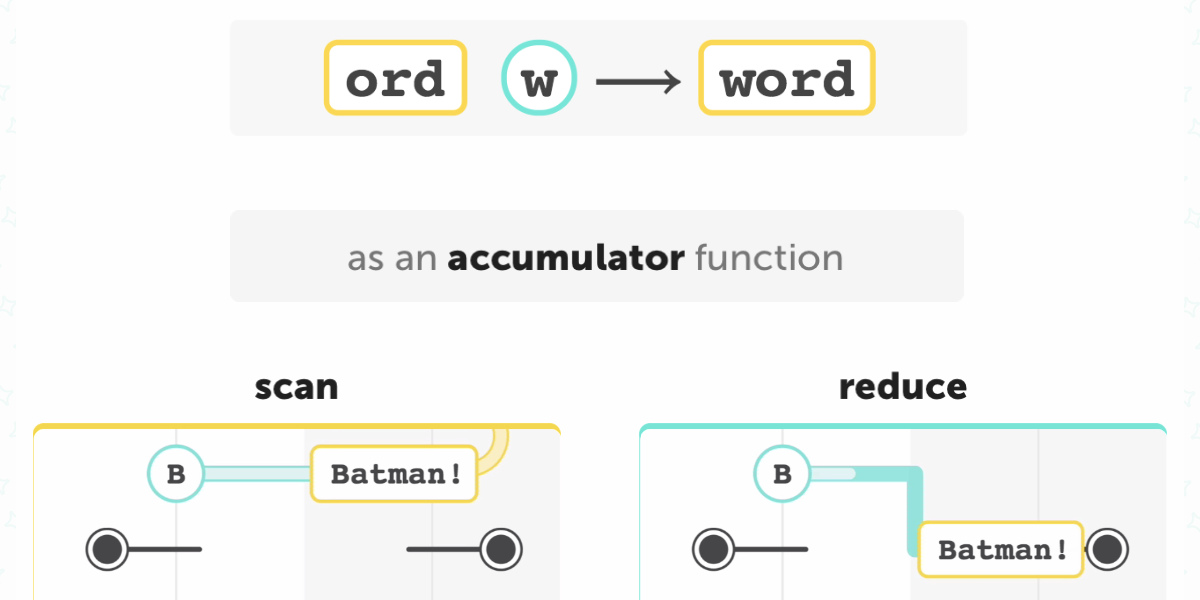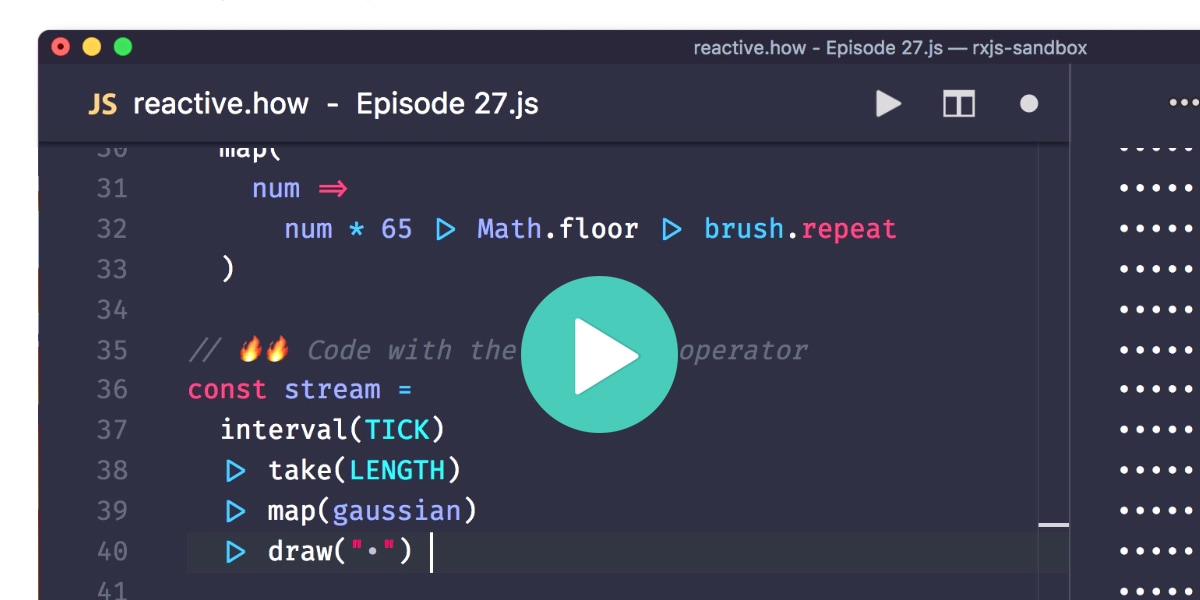reduce
accepts
1 input stream,
an accumulator,
a seed (optional)
-
❯The
seedwill be used as an initial accumulation acc -
❯When the input stream emits a value v:
- v and the latest acc are given to the
accumulator - the returned value will be used as the next acc
- v and the latest acc are given to the
- ❯When the input stream completes, the output stream emits the last acc and completes
returns a new stream of accumulated values
scan
accepts
1 input stream,
an accumulator,
a seed (optional)
-
❯The
seedwill be used as an initial accumulation acc -
❯When the input stream emits a value v:
- v and the latest acc are given to the
accumulator - the returned value is emitted and will be used as the next acc
- v and the latest acc are given to the
returns a new stream of accumulated values
Revised on Monday, 26 Nov. 2018
❚ reduce takes the same three arguments as ❚ scan:
- an input stream
- an accumulator function (e.g. prepend a
characterto astring) - an initial value called seed (e.g.
!)
Notes
As you can see, while ❚ scan returns a new stream of progressively accumulated values, ❚ reduce returns a new stream of, at most, one value. At most? If the input stream never completes, ❚ reduce will never emit any value on the output stream.
Ultimately, ❚ reduce is equivalent to ❚ scan chained with ❚ takeLast(1).
See also

Freelance Developer Advocate. Motion graphics with code. JavaScript and Elm. cedricsoulas.com

Join the Newsletter
Receive my latest news, product updates and programming visualizations. You can unsubscribe at any time.



